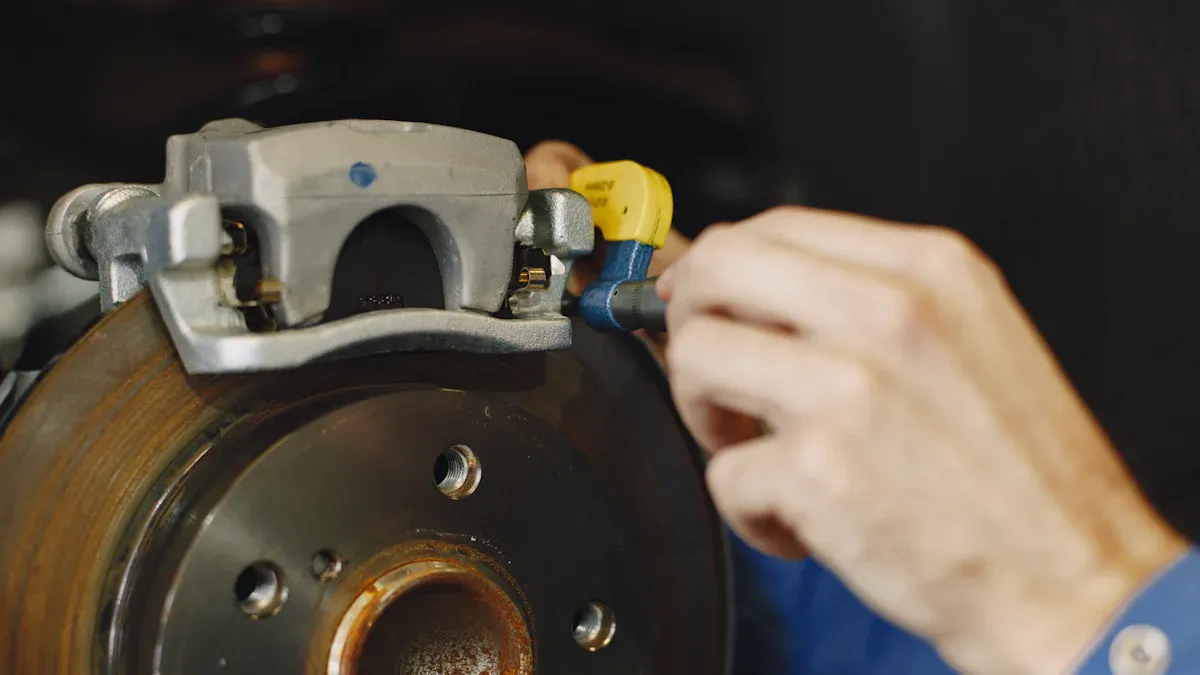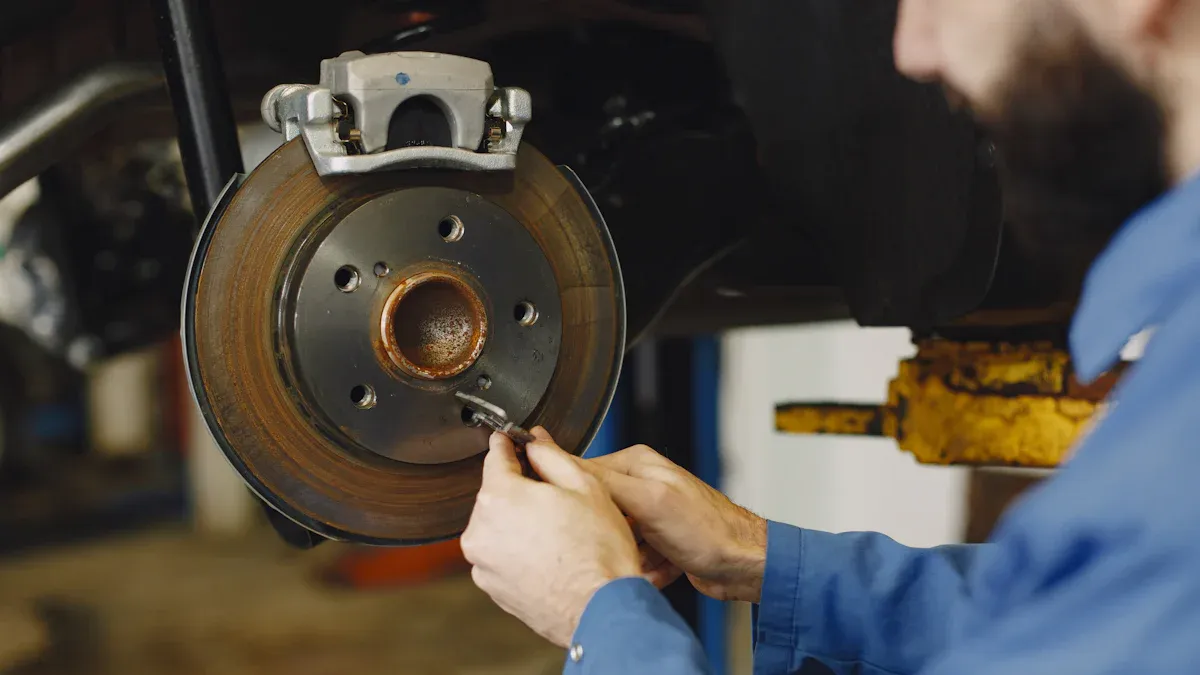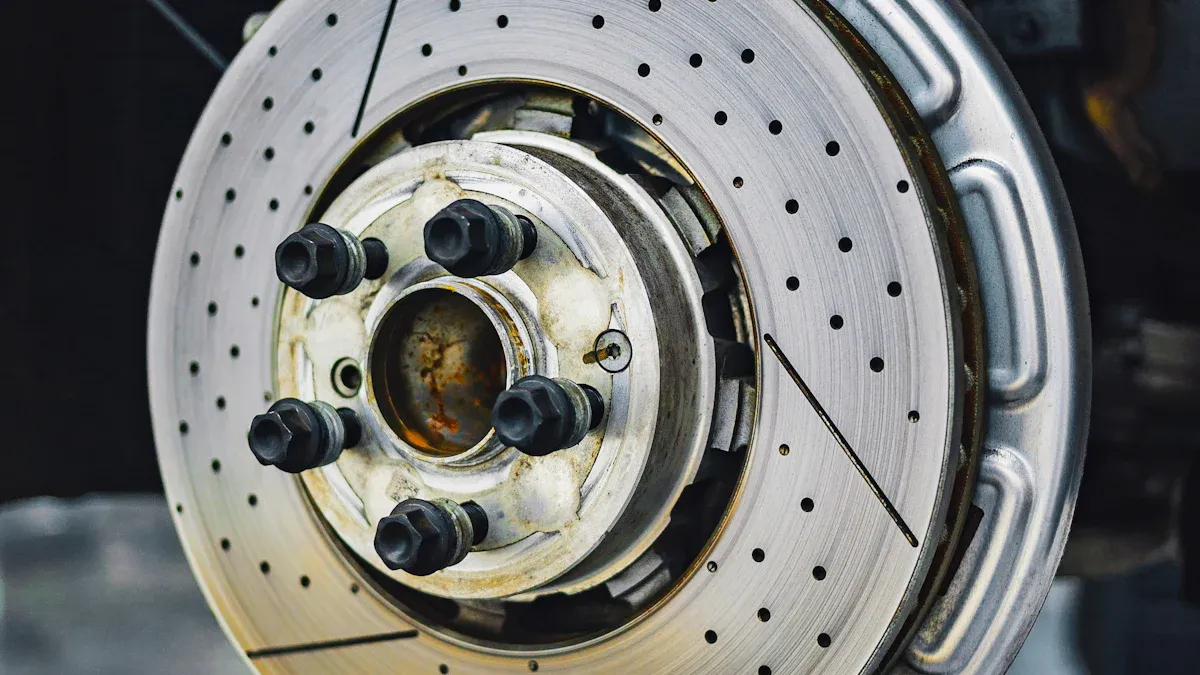
The brake master cylinder plays a crucial role in your vehicle’s braking system. When you press the brake pedal, it transforms your physical effort into hydraulic pressure. This pressure travels through the brake lines to activate the calipers, ensuring your car slows down or stops safely. Without this component, your brakes wouldn’t function effectively.
Key Takeaways
- The brake master cylinder changes your foot pressure into hydraulic force for braking.
- Check your brake fluid often to keep brakes working well and safe.
- Look out for problems like a soft pedal or leaks, and get help quickly.
Understanding the Brake Master Cylinder

What is a Brake Master Cylinder
The brake master cylinder is the heart of your vehicle’s hydraulic braking system. It is a small but powerful component that converts the force you apply to the brake pedal into hydraulic pressure. This pressure moves through the brake lines to activate the brakes on each wheel. Without the brake master cylinder, your car’s braking system would not function properly. It ensures that the braking force you apply is evenly distributed, giving you control and safety while driving.
Key Components of a Brake Master Cylinder
The brake master cylinder consists of several key parts that work together to create hydraulic pressure. These include:
- Reservoir: This holds the brake fluid needed for the system to function.
- Piston: When you press the brake pedal, the piston compresses the brake fluid to generate pressure.
- Seals: These prevent leaks and maintain pressure within the system.
- Brake Lines: These carry the hydraulic pressure from the master cylinder to the brakes.
Each component plays a critical role in ensuring the brake master cylinder operates efficiently.
Role in the Hydraulic Braking System
The brake master cylinder is essential for the hydraulic braking system. When you press the brake pedal, it pushes the piston inside the cylinder. This action compresses the brake fluid, creating hydraulic pressure. The pressure travels through the brake lines to the calipers or wheel cylinders, which then apply the brakes. This process ensures smooth and even braking across all wheels, helping you stop your vehicle safely.
How the Brake Master Cylinder Works
Converting Pedal Force into Hydraulic Pressure
When you press the brake pedal, you initiate a chain reaction. The brake master cylinder takes the force from your foot and converts it into hydraulic pressure. Inside the cylinder, a piston moves forward as you press the pedal. This movement compresses the brake fluid, creating the pressure needed to activate the brakes. The harder you press the pedal, the more pressure the system generates. This process ensures that even a small amount of effort on your part can produce enough force to stop a heavy vehicle.
Tip: Always ensure your brake pedal feels firm. A spongy pedal could indicate a problem with the brake master cylinder.
The Role of Brake Fluid in the System
Brake fluid is the lifeblood of the hydraulic braking system. It transfers the pressure created by the brake master cylinder to the brakes at each wheel. This fluid must remain clean and at the correct level to function properly. Contaminated or low brake fluid can reduce braking efficiency and compromise your safety. Regularly checking and replacing the brake fluid helps maintain the system’s performance.
Ensuring Even Braking Across All Wheels
The brake master cylinder ensures that hydraulic pressure is distributed evenly to all four wheels. This balance is crucial for safe braking, especially during sudden stops. Uneven pressure can cause the vehicle to pull to one side, increasing the risk of accidents. By maintaining consistent pressure, the brake master cylinder helps you stay in control, even in emergency situations.
Signs of a Failing Brake Master Cylinder

Common Symptoms of a Malfunctioning Brake Master Cylinder
Recognizing the signs of a failing brake master cylinder can help you avoid dangerous situations. Pay attention to these common symptoms:
- Spongy or Soft Brake Pedal: If the pedal feels soft or sinks to the floor, the master cylinder may not be maintaining proper hydraulic pressure.
- Brake Fluid Leaks: Check for fluid pooling under your vehicle. Leaks often indicate damaged seals inside the master cylinder.
- Uneven Braking: If your car pulls to one side when braking, the hydraulic pressure may not be evenly distributed.
- Warning Lights: A brake warning light on your dashboard could signal issues with the master cylinder or low brake fluid levels.
Tip: Address these symptoms promptly to prevent further damage to your braking system.
Safety Risks of Ignoring Brake Master Cylinder Issues
Ignoring problems with your brake master cylinder can compromise your safety. A malfunctioning cylinder reduces braking efficiency, increasing the risk of accidents. Uneven braking can make your vehicle harder to control, especially during emergencies. Brake fluid leaks can lead to complete brake failure, leaving you unable to stop your car.
Alert: Driving with a faulty brake master cylinder endangers you and others on the road.
When to Seek Professional Repair or Replacement
If you notice any of the symptoms mentioned, consult a professional mechanic immediately. They can inspect the brake master cylinder and determine whether it needs repair or replacement. Regular maintenance checks can also help identify issues before they become severe.
Note: Never attempt to repair the brake master cylinder yourself unless you have proper training. Professional service ensures your vehicle remains safe to drive.
The brake master cylinder keeps your vehicle’s braking system safe and efficient. Regular maintenance helps you avoid accidents and expensive repairs. If you notice any issues, don’t delay. Consult a professional mechanic for an inspection.
Reminder: A well-maintained brake master cylinder ensures your safety and peace of mind on the road.
FAQ
What happens if the brake master cylinder fails completely?
If the brake master cylinder fails, your brakes may stop working. This can make it impossible to slow down or stop your vehicle safely.
How often should you check the brake master cylinder?
You should inspect the brake master cylinder during routine maintenance or every 12 months. Regular checks help identify leaks or wear before they become serious.
Can you drive with a leaking brake master cylinder?
No, driving with a leaking brake master cylinder is unsafe. Leaks reduce hydraulic pressure, which can lead to brake failure and increase the risk of accidents.
Tip: Always address brake system issues immediately to ensure your safety on the road.
Post time: Apr-06-2025

